AMD Polaris GPU Architecture Offically Unveiled
Samuel Wan / 9 years ago
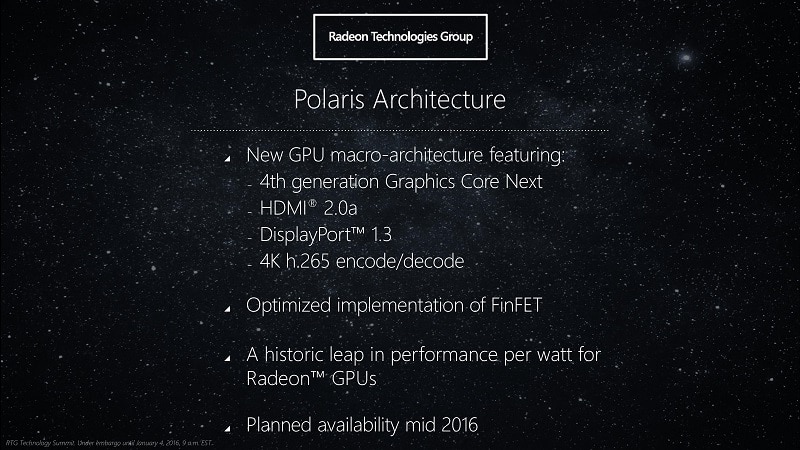
First leaked yesterday, we’re now able to bring you the full AMD presentation on their upcoming Polaris GPU architecture. Set to ship mid-2016, Polaris will be using a 14/16nm FinFET process and bring massive power consumption and efficiency improvements. According to RTG SVP Raja Koduri, AMD says the massive potential that would come out of moving to FinFETs and a lower process node at the same time and decided to design a new architecture just for that.
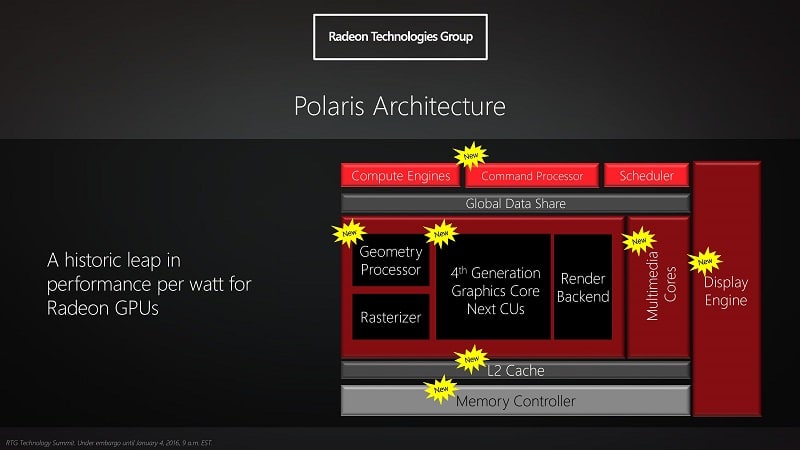
Not surprisingly, the biggest focus is on the efficiency side of things. AMD is claiming a historic leap in performance per watt that any Radeon GPU has ever seen. The key to this is the new compute units for Polaris, or GCN 4.0. While we can expect much remains similar to past GCN revisions, the new release will be adding more parts to make the chip more efficient. A more efficient hardware scheduler, primitive discard accelerator and improved memory compression are expected to help as well. While HBM(2) will help reduce power consumption, GDDR5X models will be launched first.
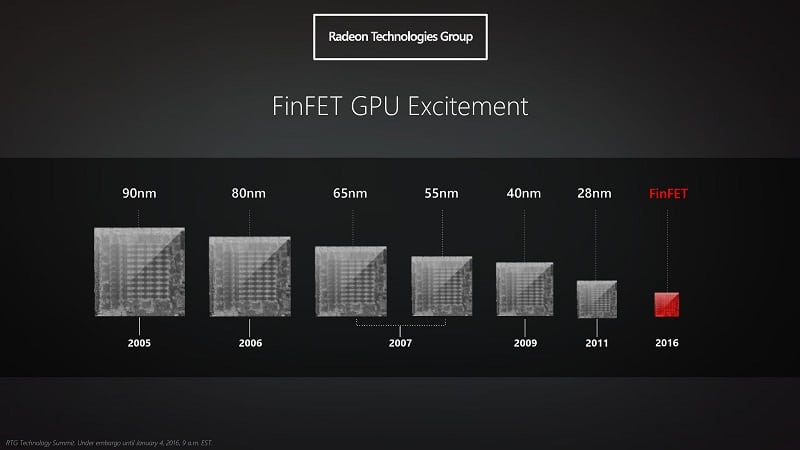
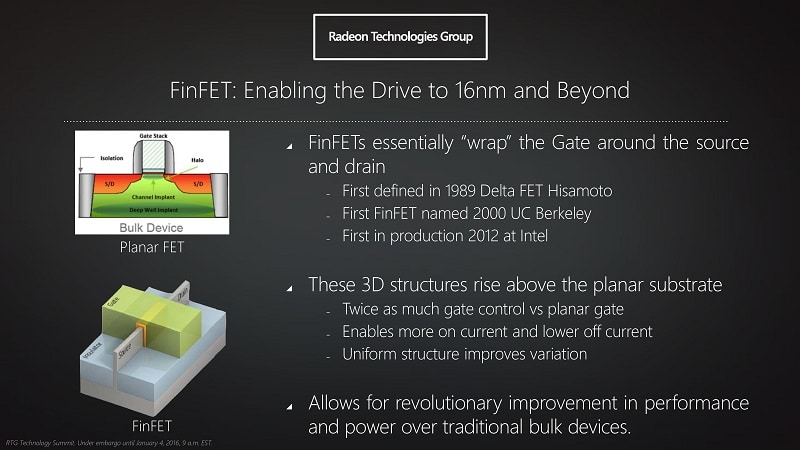
To show off their improved efficiency, AMD showed off working Polaris silicon with presumably GDDR5X. Facing off against a GTX 950 in an identical system, the Polaris part managed to pull 1.65x less power from the wall as a whole. Using only 86W total compared to the 140W on the Nvidia card. This was while both cards were running Star Wars Battlefront at 1080p 60fps. Even if some of the gains are coming from the FinFETs and die shrink, that is still pretty impressive as AMD has been lagging behind on this front. The demo GPU was made using Globalfoundries 14nm FinFET process fo what it’s worth but expect some 16nm parts from TSMC as well.
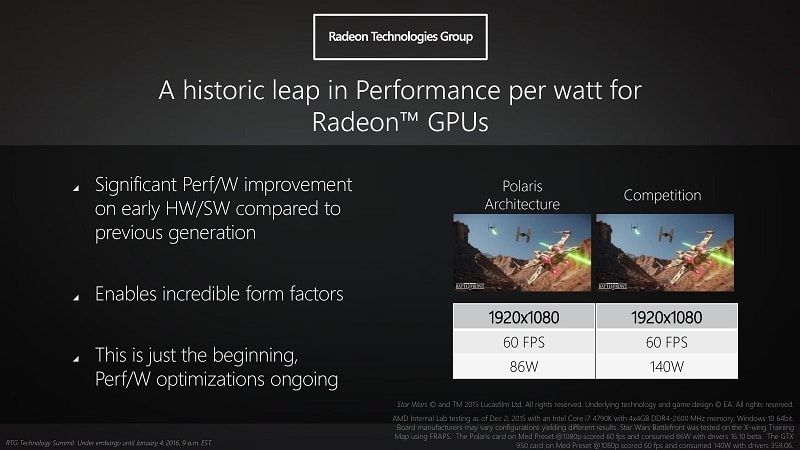
Just as AMD has done with previous GCN releases, Polaris will also see other parts of the modular system upgraded. These include the Command Processor, Geometry Processor, Multimedia Cores, Display Engine, L2 Cache and Memory Controller. For the Multimedia Cores, the biggest additions are support for 4K HEVC (h.265) encoding and decoding at 60 FPS which should be welcome as well as AMD continues to push HDR. On the connectivity side, DisplayPort 1.3, and, at long last, HDMI 2.0a are supported.
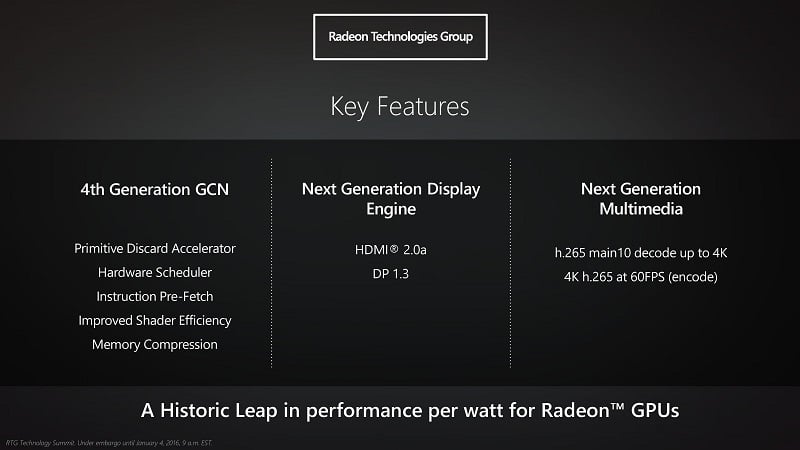
For AMD, 2016 will be a critical year as both their GPU and CPU get a major architectural overhaul at the same time they get a major process upgrade. If executed well, this may finally pull AMD out of it’s slow decline and bring the firmly back into the black. Whether that happens remains to be seen.



















